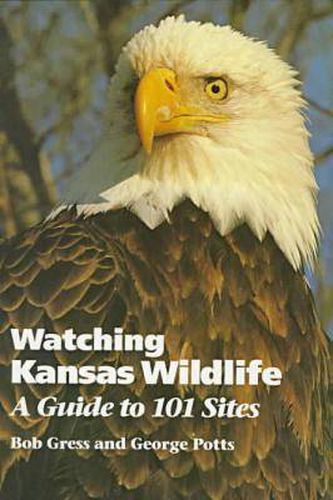Readings Newsletter
Become a Readings Member to make your shopping experience even easier.
Sign in or sign up for free!
You’re not far away from qualifying for FREE standard shipping within Australia
You’ve qualified for FREE standard shipping within Australia
The cart is loading…






In Schermerhorn Park amidst a typical Ozark landscape of oak- and hickory-covered hillsides–brilliant orange cave salamanders hide and bats hang out in the twilight zone of Schermerhorn cave, spring peepers serenade from area marshes, black redhorse and greenside darters swim through swift, clear Shoal Creek, and flying squirrels and Carolina chickadees explore their southeast Kansas woodland home. Catty-corner across the state in the arid badlands along the Arikaree River, mule deer, coyotes, and Ord’s kangaroo rats roam among the yucca and prickly pear cactus, while black-tailed prairie dogs scurry about town and burrowing owls guard their abodes.
From border to border, Kansas provides a variety of environments–often overlapping and changing gradually from east to west and north to south–that attract an assortment of animals. In Watching Kansas Wildlife, Bob Gress and George Potts have selected 101 prime sites for viewing the state’s amazingly diverse array of wildlife. They’ve included spots in every part of the state and a variety of terrains and animals of every kind, including mammals, birds, reptiles, amphibians, fish and insects.
For each site, the authors have recorded what animals can be seen and what type of environment they live in; information on land ownership (whether private or public, all sites are accessible to the public); availability of park facilities; and viewing tips. Having divided the state into six parts, they have provided maps of each region and color photographs of many of the sites and animals.
Gress and Potts have also made a list of the dynamic dozen sites, the top twelve places they consider can’t-miss opportunities because of exceptional wildlife, scenery, and viewing attributes. These include southwestern Cimarron National Grasslands, where elk, pronghorns, western rattlesnakes, Texas horned lizards, an occasional porcupine or roadrunner, and Santa Fe Trail wagon ruts can be seen on the sandsage prairie; central Cheyenne Bottoms, the largest marsh in the interior of the United States and the most important shorebird migration point in the western hemisphere; and the eastern Flint Hills, the largest remaining expanse of tallgrass prairie in the country.
Whether big or small, well known or more obscure, the sites in this guide provide an opportunity to view animals in their own intricately balanced worlds and some of the state’s most beautiful natural environments.
$9.00 standard shipping within Australia
FREE standard shipping within Australia for orders over $100.00
Express & International shipping calculated at checkout
In Schermerhorn Park amidst a typical Ozark landscape of oak- and hickory-covered hillsides–brilliant orange cave salamanders hide and bats hang out in the twilight zone of Schermerhorn cave, spring peepers serenade from area marshes, black redhorse and greenside darters swim through swift, clear Shoal Creek, and flying squirrels and Carolina chickadees explore their southeast Kansas woodland home. Catty-corner across the state in the arid badlands along the Arikaree River, mule deer, coyotes, and Ord’s kangaroo rats roam among the yucca and prickly pear cactus, while black-tailed prairie dogs scurry about town and burrowing owls guard their abodes.
From border to border, Kansas provides a variety of environments–often overlapping and changing gradually from east to west and north to south–that attract an assortment of animals. In Watching Kansas Wildlife, Bob Gress and George Potts have selected 101 prime sites for viewing the state’s amazingly diverse array of wildlife. They’ve included spots in every part of the state and a variety of terrains and animals of every kind, including mammals, birds, reptiles, amphibians, fish and insects.
For each site, the authors have recorded what animals can be seen and what type of environment they live in; information on land ownership (whether private or public, all sites are accessible to the public); availability of park facilities; and viewing tips. Having divided the state into six parts, they have provided maps of each region and color photographs of many of the sites and animals.
Gress and Potts have also made a list of the dynamic dozen sites, the top twelve places they consider can’t-miss opportunities because of exceptional wildlife, scenery, and viewing attributes. These include southwestern Cimarron National Grasslands, where elk, pronghorns, western rattlesnakes, Texas horned lizards, an occasional porcupine or roadrunner, and Santa Fe Trail wagon ruts can be seen on the sandsage prairie; central Cheyenne Bottoms, the largest marsh in the interior of the United States and the most important shorebird migration point in the western hemisphere; and the eastern Flint Hills, the largest remaining expanse of tallgrass prairie in the country.
Whether big or small, well known or more obscure, the sites in this guide provide an opportunity to view animals in their own intricately balanced worlds and some of the state’s most beautiful natural environments.